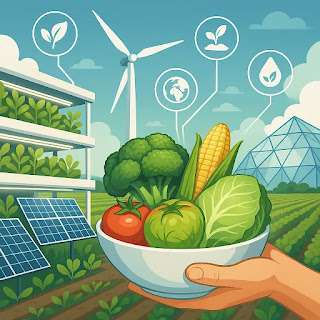The high volatility of Bitcoin and Ethereum often makes investors hesitate. Their wild price swings can be overwhelming. This market reality has propelled a stable digital asset to the forefront: the Stablecoin.
Stablecoins are digital assets designed to minimize price fluctuations. They achieve this by pegging their value to real-world assets like the US Dollar or Gold. In this article, we break down the latest 2025 market trends, explore different types of stablecoins, and detail safe investment strategies. Let's find out if now is the right time for you to enter this stable corner of the crypto world.
🎯 Stablecoins: Cryptocurrencies Built for Price Stability
As their name suggests, Stablecoins are digital assets with a 'Stable' value. They emerged to solve the major drawback of traditional cryptocurrencies like Bitcoin: extreme volatility.
Most stablecoins aim to maintain a precise 1:1 value ratio with the US Dollar. This means one stablecoin should always equal one dollar. This stability makes them vital tools in the fast-moving crypto ecosystem.
🔑 Why Do We Need Stablecoins? Three Essential Roles
Stablecoins fill critical gaps in the digital financial world. They serve three major functions that drive their necessity and adoption.
1. Escaping Market Volatility (The Safe Harbor)
When the overall crypto market experiences a sharp decline, investors often panic. You can instantly convert your volatile assets (like BTC or ETH) into stablecoins. This action allows you to safely hold your assets in a stable form without withdrawing to traditional bank accounts. It is essentially the digital version of a safe deposit box during a storm.
2. Fast and Cheap Global Transfers
Sending money across borders through traditional banking systems is slow and expensive. Stablecoins offer a far superior solution. You can send value to anyone, anywhere in the world, in minutes and at a fraction of the cost. This makes them perfect for international commerce and remittances.
3. The Foundation of Decentralized Finance (DeFi)
Stablecoins are the lifeblood of the Decentralized Finance (DeFi) ecosystem. They act as the primary currency for various DeFi activities. This includes lending, borrowing, yield farming, and providing liquidity. Without a stable medium of exchange, the complex mechanics of DeFi would simply not work.
🌟 Top 3 Stablecoins Commanding the 2025 Market
While stablecoins use different collateral methods, those backed by fiat currency currently dominate the market. We introduce the most prominent coins based on market capitalization, liquidity, and trust.
1. Tether (USDT): The Market Dominator
USDT boasts the largest market capitalization and the highest liquidity in the stablecoin sector. Virtually every global crypto exchange supports USDT trading pairs. It functions as the reserve currency of the crypto world.
Investment Highlight: Its immense liquidity allows for easy and instant buying and selling. It is an essential asset for traders actively engaged in crypto trading.
Key Consideration: Tether has faced controversies regarding the transparency of its reserve assets. Investors should continuously track relevant news and audits when holding USDT.
2. USD Coin (USDC): The Symbol of Trust and Transparency
USDC is a joint creation of the US financial technology firm Circle and the exchange Coinbase. It adheres strictly to US financial regulations. The issuer transparently publishes monthly attestation reports on its reserves, earning high trust from the market.
Investment Highlight: Its strong emphasis on regulatory compliance appeals greatly to institutional and individual investors prioritizing safety in an uncertain market.
Key Consideration: While regulation is a strength, changes in regulatory policy by government authorities could impact its issuance or circulation.
3. Dai (DAI): The Decentralized Pioneer
Unlike centralized stablecoins like USDT and USDC, Dai operates without a specific institution. It is a decentralized stablecoin managed by blockchain-based Smart Contracts. It is collateralized by other cryptocurrencies, primarily Ethereum.
Investment Highlight: Its decentralized nature means it is free from central control or censorship risk. It plays a critical role in the most advanced parts of the DeFi ecosystem.
Key Consideration: Because its collateral consists of volatile cryptocurrencies, there is a De-pegging Risk if the value of the underlying assets drops too sharply.
⚠️ Navigating the Stablecoin Market: Rewards and Risks
Stablecoins offer stability, but they are not entirely risk-free. Always understand the potential downsides before committing your capital. Smart investors check the following risks carefully.
Issuer Risk: Centralized stablecoins depend on the issuing company. Their financial health, management of collateral, and transparency can pose a threat to the coin’s stability.
Regulatory Risk: Governments globally are tightening crypto regulations. This could lead to the halting of issuance or circulation for specific coins, as seen with BUSD. Policy changes can create sudden market shifts.
De-pegging Risk: This is when the 1:1 value peg to the dollar breaks. It can happen due to insufficient collateral or a failure in the coin's underlying stabilizing algorithm. Always monitor the coin’s exchange rate closely.
Smart Contract Risk: When using stablecoins in DeFi services (like lending), you face the risk of losing assets through a platform hack or a flaw in the smart contract code. Use reputable and audited platforms only.
Stablecoins are indispensable for anyone serious about navigating the crypto market today. They offer the necessary stability to trade, transfer value, and participate in DeFi. Start your stablecoin investment journey with a clear understanding of both their benefits and their inherent risks.












.jfif)
.jfif)








